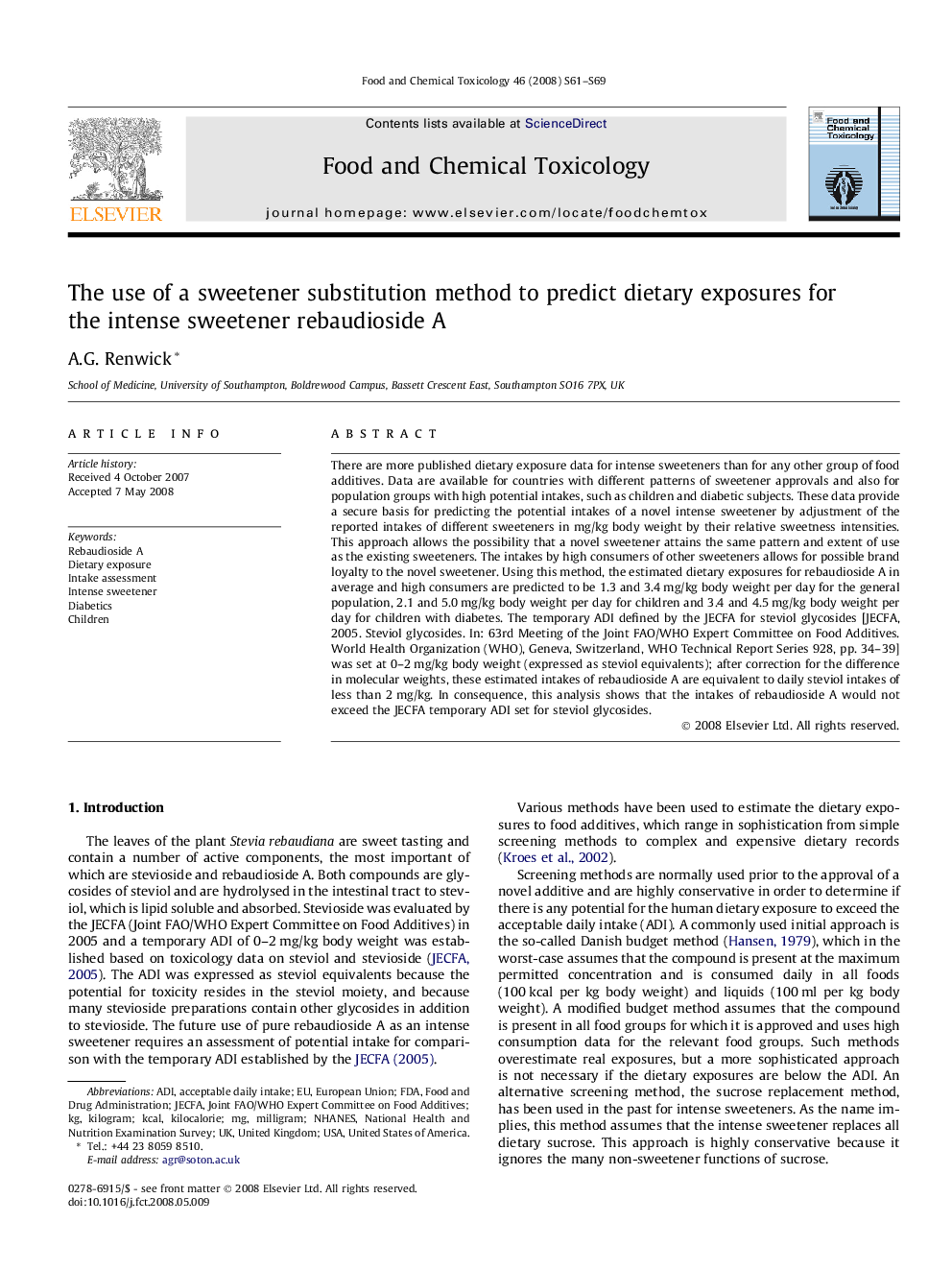| Article ID | Journal | Published Year | Pages | File Type |
|---|---|---|---|---|
| 2587326 | Food and Chemical Toxicology | 2008 | 9 Pages |
There are more published dietary exposure data for intense sweeteners than for any other group of food additives. Data are available for countries with different patterns of sweetener approvals and also for population groups with high potential intakes, such as children and diabetic subjects. These data provide a secure basis for predicting the potential intakes of a novel intense sweetener by adjustment of the reported intakes of different sweeteners in mg/kg body weight by their relative sweetness intensities. This approach allows the possibility that a novel sweetener attains the same pattern and extent of use as the existing sweeteners. The intakes by high consumers of other sweeteners allows for possible brand loyalty to the novel sweetener. Using this method, the estimated dietary exposures for rebaudioside A in average and high consumers are predicted to be 1.3 and 3.4 mg/kg body weight per day for the general population, 2.1 and 5.0 mg/kg body weight per day for children and 3.4 and 4.5 mg/kg body weight per day for children with diabetes. The temporary ADI defined by the JECFA for steviol glycosides [JECFA, 2005. Steviol glycosides. In: 63rd Meeting of the Joint FAO/WHO Expert Committee on Food Additives. World Health Organization (WHO), Geneva, Switzerland, WHO Technical Report Series 928, pp. 34–39] was set at 0–2 mg/kg body weight (expressed as steviol equivalents); after correction for the difference in molecular weights, these estimated intakes of rebaudioside A are equivalent to daily steviol intakes of less than 2 mg/kg. In consequence, this analysis shows that the intakes of rebaudioside A would not exceed the JECFA temporary ADI set for steviol glycosides.
